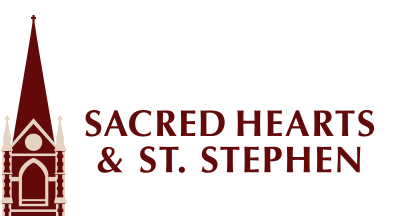The Inauguration of His Holiness Francis I
Correct Term for the event
The correct term for the ceremony is not enthronement but inauguration.
As successor of Peter, the Pope is Bishop of Rome and the Church of Rome ‘presides in love’ over the others. Also, it is a celebration rich with symbols that recall the Pope’s tie to St. Peter, beginning with the place where, according to tradition, Peter was martyred.
Schedule of events
Between 8:45 and 8:50am the Pope will depart the Domus Sanctae Marthae and start to move through the crowd in the various sections of the piazza—either in the Jeep or the Popemobile—and greet those gathered.
He will return to the Sacristy, via the Pietà side, around 9:15am. Mass is planned to begin at 9:30am.
Regarding the beginning of the ceremony, the Pope, once having entered the Basilica, will head to the Confession (St. Peter’s tomb under the high altar) while trumpets will announce the “Tu es Petrus”.
The Pope will venerate the tomb of St. Peter, together with the Patriarchs and Major Archbishops of the Eastern Rite Catholic Churches.
He will then be presented with the Pallium, Ring, and Book of the Gospels that were placed at St. Peter’s tomb the night before.
The Holy Father will then come back up from the Confession to the main floor of the Basilica, from which the procession continues.
The “Laudes Regiae” (Christ is King) will be chanted, with some invocations taken from the Vatican II document on the Church, “Lumen Gentium”. In the Litany of Saints are particularly to be noted, after the Apostles, the Holy Roman Pontiffs who have been canonized up to the most recent: St. Pius X. (these are only the pontiffs who have been named as saints, not those who have been beatified).
The procession will then make its entrance into the square.
Before the Mass begins there are the rites specific to the beginning of the Bishop of Rome’s Petrine Ministry. These include:
• The Imposition of the Pallium:
Made of lamb’s wool and sheep’s wool, the Pallium is placed on the Pope’s shoulders recalling the Good Shepherd who carries the lost sheep on his shoulders. The Pope’s Pallium has five red crosses while the Metropolitans’ Palliums have five black crosses. The one used by Francis is the same one that Benedict XVI used. It is placed on the Pope’s shoulders by Cardinal proto-deacon Tauran and, after the imposition, there is a prayer recited by Cardinal proto-presbyter Daneels.
• The Fisherman’s Ring:
Peter is the fisherman Apostle, called to be a “fisher of men”. The ring is presented to the Pope by Cardinal Deacon Sodano (first of the Order of Bishops). It bears the image of St. Peter with the keys. It was designed by Enrico Manfrini The ring was in the possession of Archbishop Macchi, Pope Paul VI’s personal secretary, and then Msgr. Malnati, who proposed it to Pope Francis through Cardinal Re. It is made of silver and gold.
• The “Obedience”:
o Six cardinals, two from each order, among the first of those present approach the Pope to make an act of obedience. Note that all the Cardinal electors already made an act of obedience in the Sistine Chapel at the end of the Conclave and that all the cardinals were able to meet the Pope in the following day’s audience in the Clementine Hall. Also, at the moment of “taking possession” of the Cathedral of Rome—St. John Lateran—it is expected that the act of obedience will be made by representatives of the various members of the People of God.
The Mass will be that of the Solemnity of St. Joseph, which has its own readings. The Gospel will be proclaimed in Greek, as at the highest solemnities, to show that the universal Church is made up of the great traditions of the East and the West. Latin is already abundantly present in the other prayers and Mass parts.




 : is a famous title given to the Blessed Virgin Mary as she reportedly appeared in apparitions to three shepherd children at Fátima, Portugal. These occurred on the 13th day of six consecutive months in 1917, starting on May 13. The three children were Lúcia dos Santos and her cousins Jacinta and Francisco Marto.
: is a famous title given to the Blessed Virgin Mary as she reportedly appeared in apparitions to three shepherd children at Fátima, Portugal. These occurred on the 13th day of six consecutive months in 1917, starting on May 13. The three children were Lúcia dos Santos and her cousins Jacinta and Francisco Marto.
